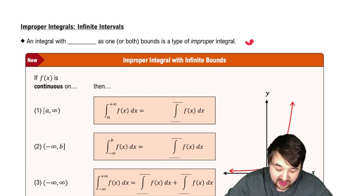92–98. Evaluate the following integrals.
92. ∫[1 to √2] y⁸ e^(y²) dy
 Verified step by step guidance
Verified step by step guidance Verified video answer for a similar problem:
Verified video answer for a similar problem:



 8:30m
8:30mMaster Introduction to Integration by Parts with a bite sized video explanation from Patrick
Start learning